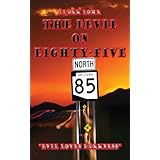Not everybody thinks of murder as an entertainment, Sherry Kiyler told the attendees of recent Sisters in Crime meeting in Scottsdale, Arizona. Kiyler, a retired police chief, gave Homicide Survivors, Inc., http://www.azhomicidesurvivors.org/ as one example of a bunch of people who aren’t enthusiasts.
Homicide Survivors, Inc., isn’t the only nonprofit that fails to see the entertainment value in murder. The National Organization of Parents of Murdered Children, Inc. launched their MINE program in 1993—Murder is Not Entertainment. http://www.pomc.org/mine.html.
Their statement reads, in part: “It is tragic that children purchase…murder video games, murder comic books and murder trading cards. But why not? After all, adults “play” murder by participating in murder mystery dinner theaters….Studies have shown that children can learn to demean and destroy through overexposure to TV violence….”
Those of us who write in the genres most generally described as Mystery, Crime Fiction, and Thriller may—or may not—care about whether we’re making things worse or making things better. After all, what kind of thing do we want to make it? Murder just is. War just is. I’m a member of the Veterans for Peace; our stated mission is the “abolishment of war.” I know it’s not going to happen, I’d like them to rewrite that as “our stated mission is the advancement of diplomacy,” but I still pay my dues. We’re hearing from ourselves that U.S. society is violent, gun crazy. Do we compare ourselves to other nations? The Chinese? Their government maintains they didn’t kill anybody in Tiananmen Square in 1989. Journalists on the ground say the government killed 15,000 people—with guns and tanks—but that’s the wrong kind of crime for our purpose here. That’d be what the Chinese government might describe as “lawful.” It takes a government to deal in “lawful death.”
The United Nations Office of Drugs and Crime (UNODC) obtains the best data it can—from “competent national authorities.” Given that figures lie and liars figure, here are some UNODC statistics. The UNDOC defines intentional homicide as “unlawful death purposefully inflicted on a person by another person”—in this case, by firearm.
Numbers of homicides by firearm in a given year, in a given country—picked at random, by me.
Switzerland: 57 homicides by firearm in 2004. Subsequent years not listed, for whatever reason.
Czech Republic: 20 in 2009. Kazakhstan: 210 in 2008. India: 3,093 in 2009. Guatemala: 5,009 in 2010.
Mexico: 11,309 in 2010. (Approximately 120.8 million population in Mexico in 2012.)
United States: 9,960 in 2010. (Approximately 313.9 million population in 2012.)
Canada: 173 in 2009. (Approximately 35 million population in 2013.)
If there were such a thing as an all-NAFTA-nations passport, some of the more gun-shy U.S. and Mexican citizens would be leaving for Canada—including, I suspect, some of us who write mysteries and crime fiction.
— Clark Lohr is the author of two crime novels, Devil’s Kitchen and The Devil on Eighty-five. He lives in Tucson, Arizona.
http://www.amazon.com/s/ref=nb_sb_noss?url=search-alias%3Daps&field-keywords=clark+lohr


